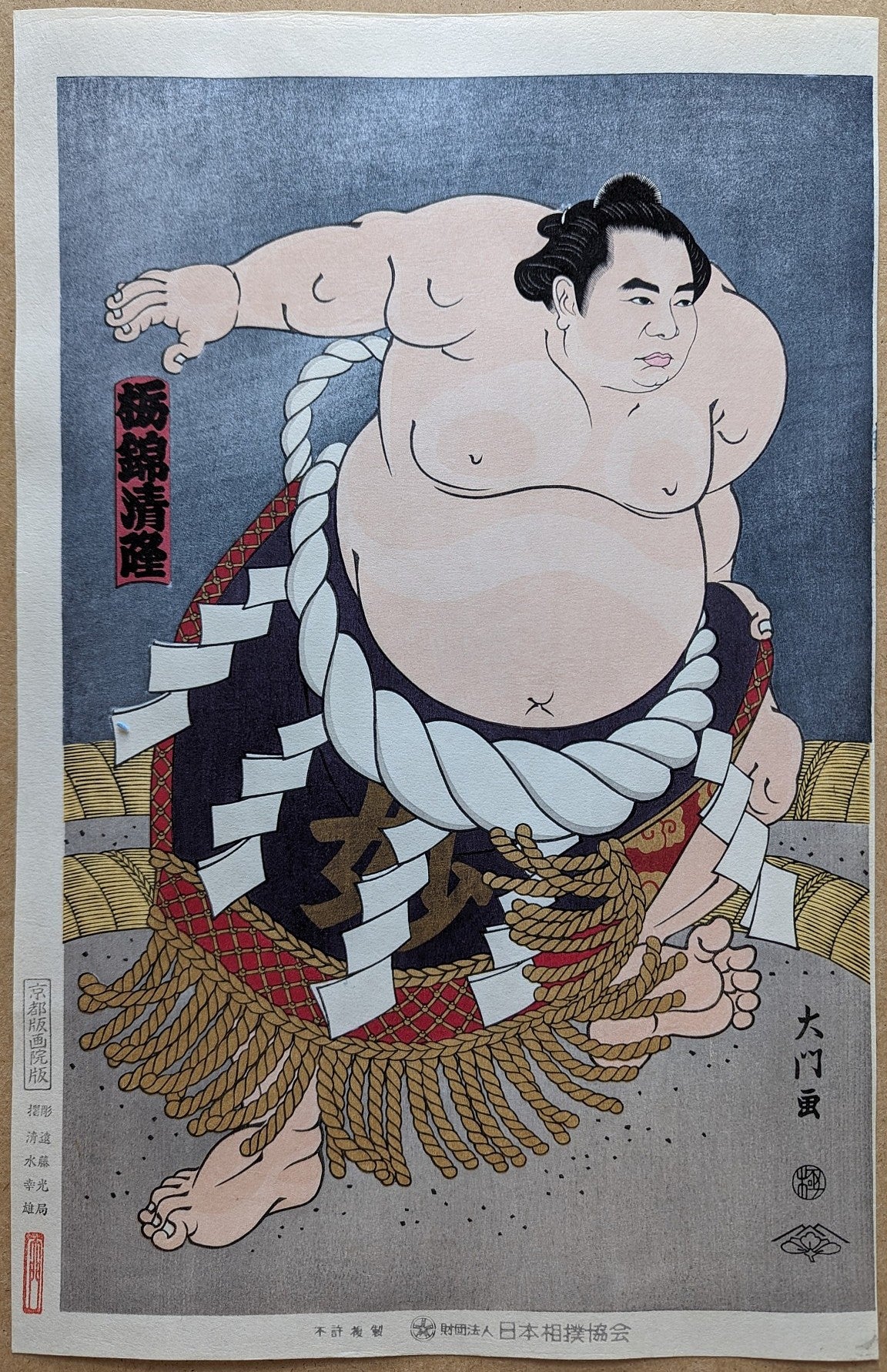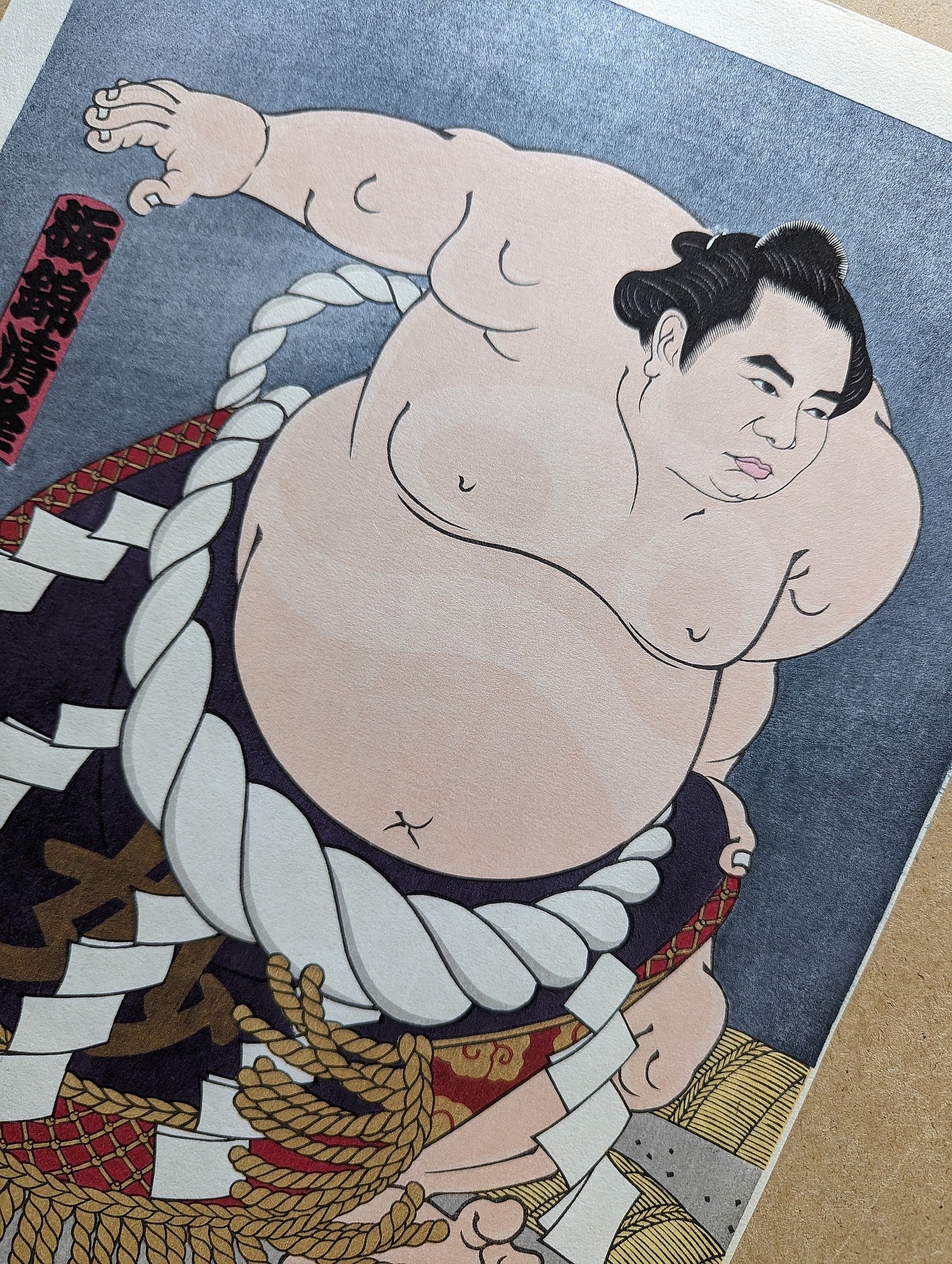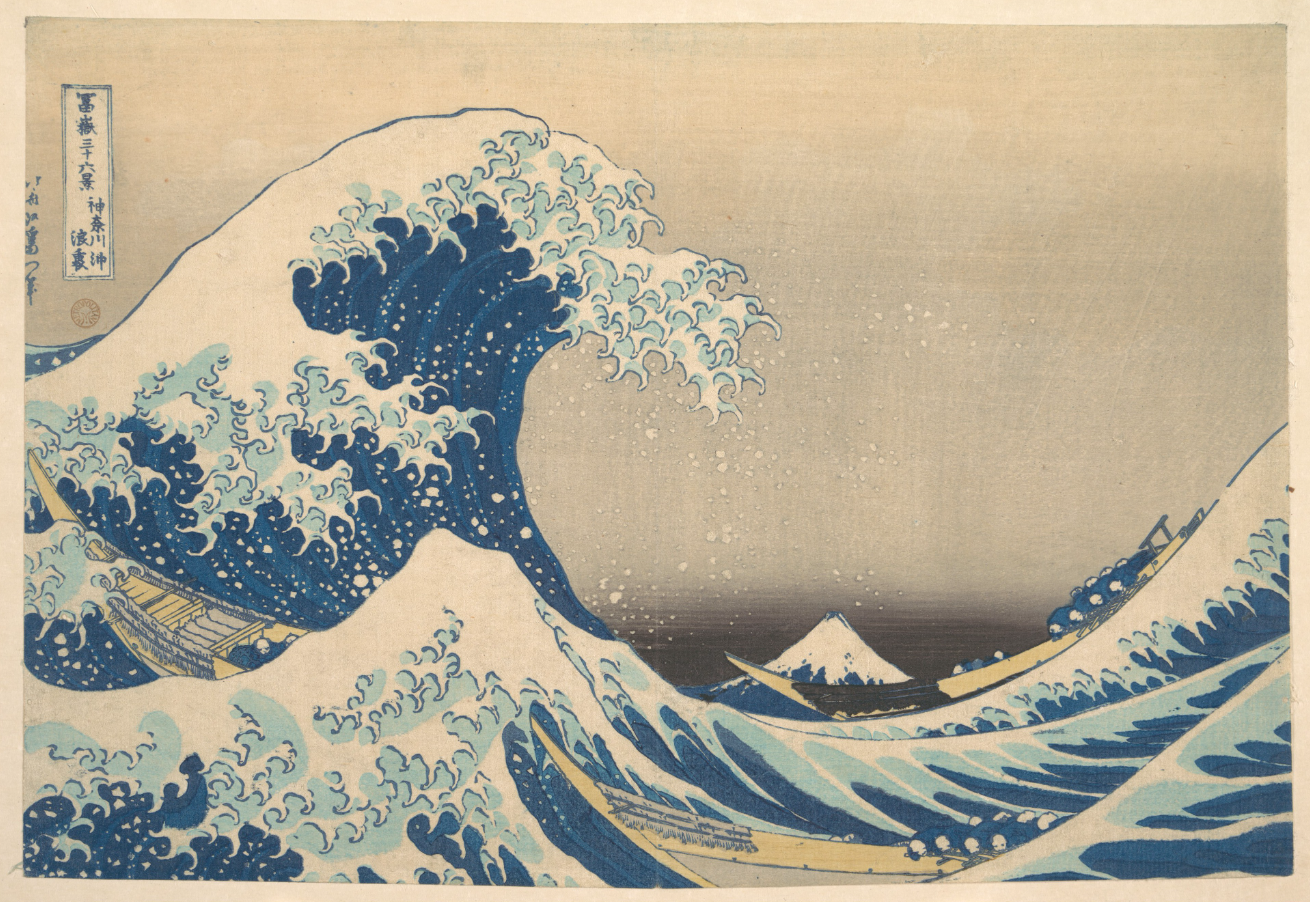



Daimon Kinoshita - 横綱栃錦土俵入り(Yokozuna Tochinishiki Kiyotaka Ring-Entering Ceremony)
A fabulous woodblock print by Daimon Kinoshita: 横綱栃錦土俵入り (Yokozuna Tochinishiki Kiyotaka Ring-Entering Ceremony). The 44th Yokozuna, Tochinishiki Kiyotaka (栃錦清隆, 1925–1990), is shown in his imposing dohyō-iri (土俵入り) pose. His body leans powerfully forward, framed by the bold white tsuna rope and shide zigzag streamers of his ceremonial belt, while his feet press firmly into the dohyo’s straw edge. Kinoshita captures the tension and grandeur of the ring-entrance, an image steeped in Edo ukiyo-e tradition and revived through his modern nishiki-e craft. 🏯💪
- Year & Edition: 1985 onward · Published by 京都版画院 (Kyoto Hanga-In). Carved by 遠藤光局 (Endo Mitsuki?). Printed by 清水幸雄 (Shimizu Yukio?). Margin inscriptions include “不許按製” (rights), 財団法人 日本相撲協会 (Japan Sumo Association), and copyright seals, with Kinoshita’s “Daimon” and edition seals below.
- Medium: Woodblock.
- Dimensions: Sheet W: 27.00 cm × H: 41.00 cm.
- Condition: Wonderfully stored; strong, beautiful colours, paper crisp & intact.
-
Notes: Tochinishiki, known early in his career for his lighter build, rose through skill and technique to become the 44th Yokozuna. He maintained a fierce rivalry with Yokozuna Wakanohana I, retiring in 1960 and later serving as chairman of the Japan Sumo Association (1974-1988). Daimon Kinoshita comments on his website (www.daimon-e.sakura.ne.jp): 「第44代横綱。」(44th Yokozuna).
About the Artist
Born in Hokkaidō in 1946, Daimon Kinoshita is Japan’s foremost contemporary artist of sumo nishiki-e (錦絵). Since 1985 he has worked closely with the Japan Sumo Association, using authentic Edo-period ukiyo-e techniques and the traditional hanmoto system of artist, carver, and printer. His woodblock prints bring Yokozuna, Ōzeki, and rikishi to life in bold ceremonial portraits, often depicting the dohyō-iri (土俵入り) ring-entrance with mica (kirazuri) details that echo Edo traditions. Sold at the Kokugikan arena and presented to visiting dignitaries, Kinoshita’s works combine beauty, craft, and cultural significance, keeping the art of nishiki-e alive in the modern age. [ ← View All Works by Daimon Kinoshita]
Choose options


